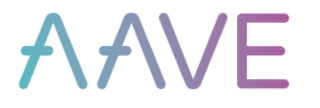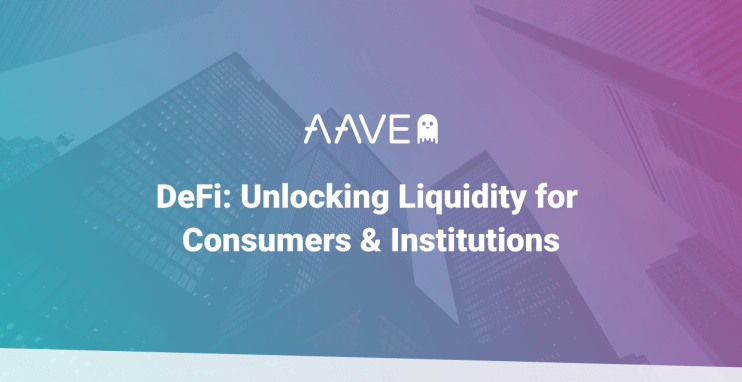
DeFi: Unlocking liquidity for consumers & institutions

Decentralised Finance (called ‘DeFi’ for short) refers to the distributed applications or financial ‘protocols’ that are built on a public blockchain and are community governed rather than controlled by a centralised entity or intermediary.
One way to think of it is as a system of open source “money legos” or components that can be assembled as building blocks for different financial tools and services. Part of the attraction of DeFi is that the decentralisation aspect does not solely refer to the technology, but also to geographical location. DeFi is location-agnostic, enabling anyone across the globe to build and utilise these financial tools and services, unlocking liquidity for people who previously lacked access. This improves consumer access to financial services and encourages financial inclusion.
Decentralised liquidity protocols like Aave enable users and institutions alike to lend and borrow a variety of digital assets. Since there are no financial intermediaries involved, lenders earn historically higher interest rates than in a traditional savings account, making platforms like Aave an attractive way to maximize passive income. This is particularly valuable in today’s environment where interest rates are extremely low and some banks even charge negative interest. Users are also able to post collateral and borrow against it, or even obtain a credit line from another depositor and borrow against it without needing to put up any collateral of their own. This means that people have access to a wide pool of liquidity in the protocol, even if they do not have pre-existing capital to use as collateral.
DeFi for the User
For the end-consumer, DeFi lending protocols pose certain advantages over traditional financial services such as those provided by banks. After the controversy that erupted when Robinhood halted trading for certain securities, many retail users have started to see the need for a permissionless financial market that operates 24/7 without any restrictions. With historically higher rates that fluctuate based on market supply and borrowing demand, DeFi makes it possible for retail users to earn a passive income with a ‘crypto savings account’.
Institutions are coming to DeFi
Institutional interest in DeFi is getting stronger. Wallets, neo-banks, and custodians have already built the technology that is needed for institutional adoption of digital assets, and some companies, notably Tesla, are already adding Bitcoin to their corporate treasury. The next step is for these tools to enable institutional access to DeFi. Todays’ low interest rate environment leaves family offices, corporate treasuries, hedge funds, and more looking for a way to earn higher yields. DeFi lending services are able to offer this, making them an attractive option. The borderless nature of DeFi positions it as a source of liquidity for the traditional financial world and global debt markets.
Decentralised and centralised worlds collide
While at the start, DeFi and the rest of the crypto space was aiming to be an alternative to mainstream finance, this interoperability between the two is promising for the future. Banks, institutions, and corporate treasuries are exploring the role of digital assets and DeFi is slowly but surely entering financial debt markets across the globe. As it becomes easier to acquire digital assets and onboard to the world of DeFi, DeFi’s backend technology is merging with front-end finance to create a more flexible financial system for end-consumers and institutions alike.